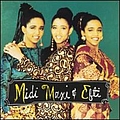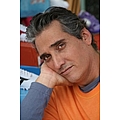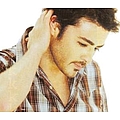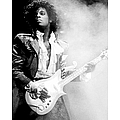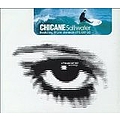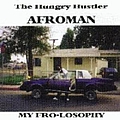About genre
The decade of the 1990s was possibly the most diverse period of pop music in history. Starting soon after the 1980s ended (1991), musical trends quickly shifted from the 1980s standards, most notably the shift from synthpop to House music from the years 1989 to 1991, the replacement of hair metal and classic rock with alternative rock and Grunge, and the popularity of Gangsta rap and the dominance of hip hop in general starting in the early 1990s. United States and Canada --------------------------------------------- Pop ------ Modern R&B and urban pop the most powerful forces in the Top 40 from 1992 to 1998. Popular artists include Usher, Aaliyah, R. Kelly, Whitney Houston, TLC, Seal, Jodeci, Mariah Carey SWV, En Vogue, Brandy, Boyz II Men, and Monica. Teen pop carries over from the late 1980s into the year 1990, with New Kids on the Block at their peak and Debbie Gibson and Tiffany at the end of their careers. In 1997 teen pop comes back in a much larger way than it ever was in the 1980s with hit-factory groups including the Backstreet Boys and Spice Girls that overshadowed not only the acts of the 1980s like them, but all other music popular in the late 1990s. A revival of the singer-songwriter movement of the 1970s, closely connected to Third-wave feminism and the Lilith Fair, this movement lasted up to about 2002 with artists like Norah Jones. Important artists include Alanis Morissette, Edwin McCain, Jewel, Natalie Merchant and Sheryl Crow. Unsure pop was a brand of pop that also had R&B and Grunge mixed in. It started in 1993 with bands like Completely Uncomplete, Unamazing Grace, & Great Hiding Place. It became popular in about 1996 when CCMZ & Evil Laugh formed. It ended in 2002 when CCMZ first disbanded. Rock -------- The rise of the alternative rock sound and the fall of classic rock - 1990s rock was defined by lyrics relating to depression and awareness, and lacked both party songs and complex guitar solos. Hair metal popular up to the year 1992, when Grunge took its place and Guns N Roses disbanded. The glory days of hair metal ended by 1990, from that point on, it was widely ridiculed and people waited for something new to take its place. Grunge, the defining genre of the decade, was popular from 1991 to 1994. Nirvana are considered to have brought both Grunge and alternative rock, which dominates both the 1990s and 2000s rock scenes into the mainstream. Pop-punk breaks into the mainstream by 1994 with the success of Green Day, The Offspring and Weezer - by the early 2000s this would merge with emotional hardcore and start the 2000s Emo trend. Britpop popular in America and Canada in the second half of the 1990s - bands like Oasis, The Verve and Blur take over the grunge scene which transforms into adult contemporary rock and post-grunge. Hip hop ----------- At the beginning of the 1990s, MC Hammer and Vanilla Ice make hip hop popular to the pop audience, and mark the beginning of hip hop's so far permanent place in pop music. By 1992, hip hop starts to rival rock music with artists like Dr. Dre, Snoop Dogg, Eazy-E, Nas, 2Pac and Notorious B.I.G., all of who made gangsta rap popular on pop radio and had a 27 Club-like status. Pop rap in the late 1990s leads to the hip hop and Top 40 scenes becoming synonymous by the 2000s. Alternative Rap became a popular contrast to gangsta rap, and Pop rap. With artists like De La Soul, A Tribe Called Quest, Digable Planets, and Arrested Development (group) Political Rap also became popular because of artists like Public Enemy, N.W.A, Paris (rapper), and The Coup Country ------------ Garth Brooks the most popular artist of the 1990s, selling more concerts than Mariah Carey. Artists like Faith Hill, LeAnn Rimes and Tim McGraw bring country music crossover success, see pop country. Europe ---------------------------------------------------- Rock ---------- In the late 1980s and early 1990s, the Madchester movement, including bands like the Stone Roses and Happy Mondays, was popular and would influence the twee pop and indie rock of the 1990s and 2000s. Britpop would define the United Kingdom scene of the 1990s, and enjoyed international success Down Under and in North America. Pop --------- Teen pop, which lost popularity in the United States in 1991, was popular in Europe throughout the 1990s. Dance music and techno a strong influence on pop, bands like Eiffel 65 and the Spice Girls being examples. Electronica ---------- Techno and rave music, while popular in clubs in the United States, were popular in and out of clubs in Europe and the United Kingdom.
Popular 90s artists
- Midi Maxi & Efti90s/Hip-Hop/Pop
- Guillermo Dávila90s/Latin/Pop
- Burak Kut90s/Pop
- Soultans90s/Pop/Soul
- Nona Gaye90s/Rnb/Soul
- Samira90s
- El General90s/Hip-Hop/Latin/Reggae
- Litzy90s
- Ace Of Base90s/Pop
- Double You90s/Electronic/Pop
- TH Express90s
- Nautilus Pompilius90s/Rock
Popular 90s songs
- Rednex
Cotton Eye Joe lyrics - Burak Kut
Benimle Oynama lyrics - Oasis
Wonderwall lyrics - Goo Goo Dolls
Iris lyrics - Madonna
Erotica lyrics - Dizzy Mizz Lizzy
Back-Bone-Beat lyrics - Wilki
O Sobie Samym lyrics - Celine Dion
My Heart Will Go On lyrics - Technotronic
Pump Up The Jam lyrics
Popular 90s albums
- Chicane
Saltwater - Marillion
Afraid Of Sunlight - Afroman
My Fro-Losophy - Søs Fenger
Gamle Flammer - Prince
The Gold Experience - Coldplay
One Night in Paris (2002-08-27) - Lady Pank
Zawsze tam gdzie ty - Notorious B.i.g.
Ready to Die - Laid Back
Hole in the Sky - Nirvana
Nevermind - Snap!
The Madman's return - Rednex
Sex & Violins
